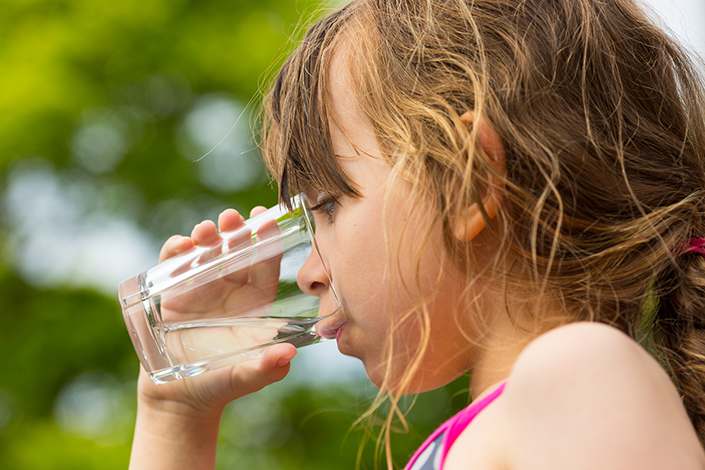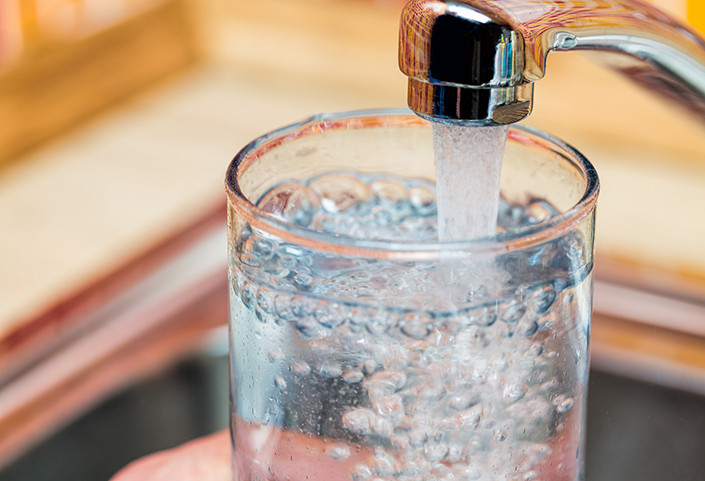 Whether you choose to drink water just when you’re thirsty or you subscribe to the conventional wisdom of drinking eight glasses a day, it is important to drink enough water to stay hydrated. It’s also vital for your health and well-being to make sure that the water you drink is clean and safe for consumption.
Whether you choose to drink water just when you’re thirsty or you subscribe to the conventional wisdom of drinking eight glasses a day, it is important to drink enough water to stay hydrated. It’s also vital for your health and well-being to make sure that the water you drink is clean and safe for consumption.
In Canada, if you live in a city or town, you probably get your water from a municipal supply system. The municipality is responsible for making sure it is free from contaminants. If you live in a rural area and your water supply is from a well on your property, you are responsible for the quality of your own water.
WELL WATER TESTING
If a well on your property is your household’s source of water, how do you know that your drinking water is safe for consumption? You have to test it which is why Public Health is urging residents who drink water from their own well to test it for bacterial contamination at least three times a year, especially in the spring, summer and fall. Unfortunately, most wells in Wellington and Dufferin counties are not tested as often as they should be. In fact, less than half of all household wells were tested even once between 2011 and 2015.
Well owners can have their water tested for contamination from coliform bacteria and E. coli for free. So, if your household gets water from a well on your property, here’s what to do to get your water tested:
- Pick up a sampling bottle from a Public Health location and at some municipal offices.
- Follow the instructions that come with the sampling bottle for collecting, storing and transporting a water sample.
- Drop off your water sample at a designated location in Guelph, Orangeville, Fergus, Shelburne, Mount Forest and Palmerston.
- Repeat in the spring, summer and fall (or more often).
Wellington-Dufferin-Guelph Public Health sends water samples by courier to the Public Health Ontario Laboratory for testing. The results are available within three days of being received by the lab (by phone or mail).
Public Health is available to assist well owners who have questions about well water testing or who want help to interpret the lab results. For assistance, call 1-800-265-7293 ext. 4753 to speak with a public health inspector.
It is also a good idea for well owners to keep a record of changes to the quality of their water to identify potential problems, and to determine if the regular maintenance and treatment of their well is effective.
DISEASE-CAUSING BACTERIA
The Public Health Ontario Laboratory tests household well water samples for two indicators of bacteriological contamination, namely coliform bacteria and E.coli. These microorganisms can be the cause of enteric diseases with symptoms that include nausea, abdominal cramping and diarrhea. In fact, a Canadian study revealed that the risk of enteric disease is five times greater for people with private wells as their source of household water. Young children, older adults and anyone with a weakened immune system are more vulnerable to serious complications that can be life-threatening.
Coliform bacteria is often found in animal waste, sewage, soil and vegetation. If the total coliform count in well water is high, the water may be unsafe to drink. Use an alternative source of water and contact Public Health for more information.

E.coli is a fecal coliform bacteria found in the digestive systems and feces (stool) of humans and animals. If well water tests positive for the presence of E. coli, the water is unsafe to drink. Use an alternative source of water and contact Public Health for more information.
The source of bacterial contamination can be above ground through heavy rainfall, spring run-off and flooding. The source can also be below ground such as improperly maintained septic systems.
LOCAL DATA FROM WELL WATER SAMPLES
Wellington-Dufferin-Guelph Public Health has recently conducted a preliminary analysis of more than 30,000 well water test results over a five-year period. This analysis revealed that one in five of the water samples showed evidence of bacterial contamination. Furthermore, approximately three percent of the water samples were positive for E. coli and unfit for consumption.
This preliminary analysis shows why it is important that well owners test their water and increase the testing frequency to ensure it is fit for human consumption. Public Health encourages well owners to know the answer to the question … how well is your water?
